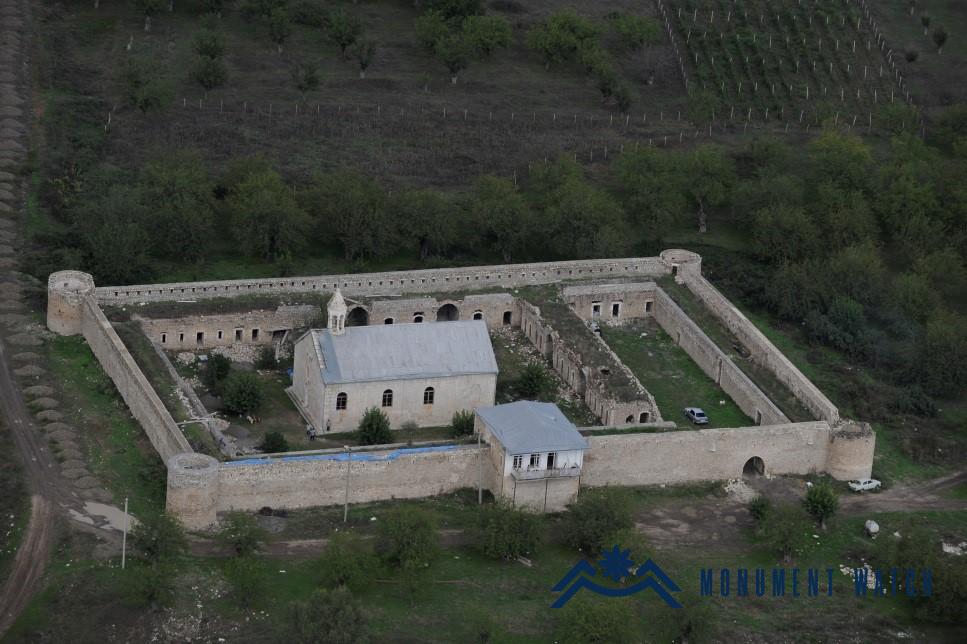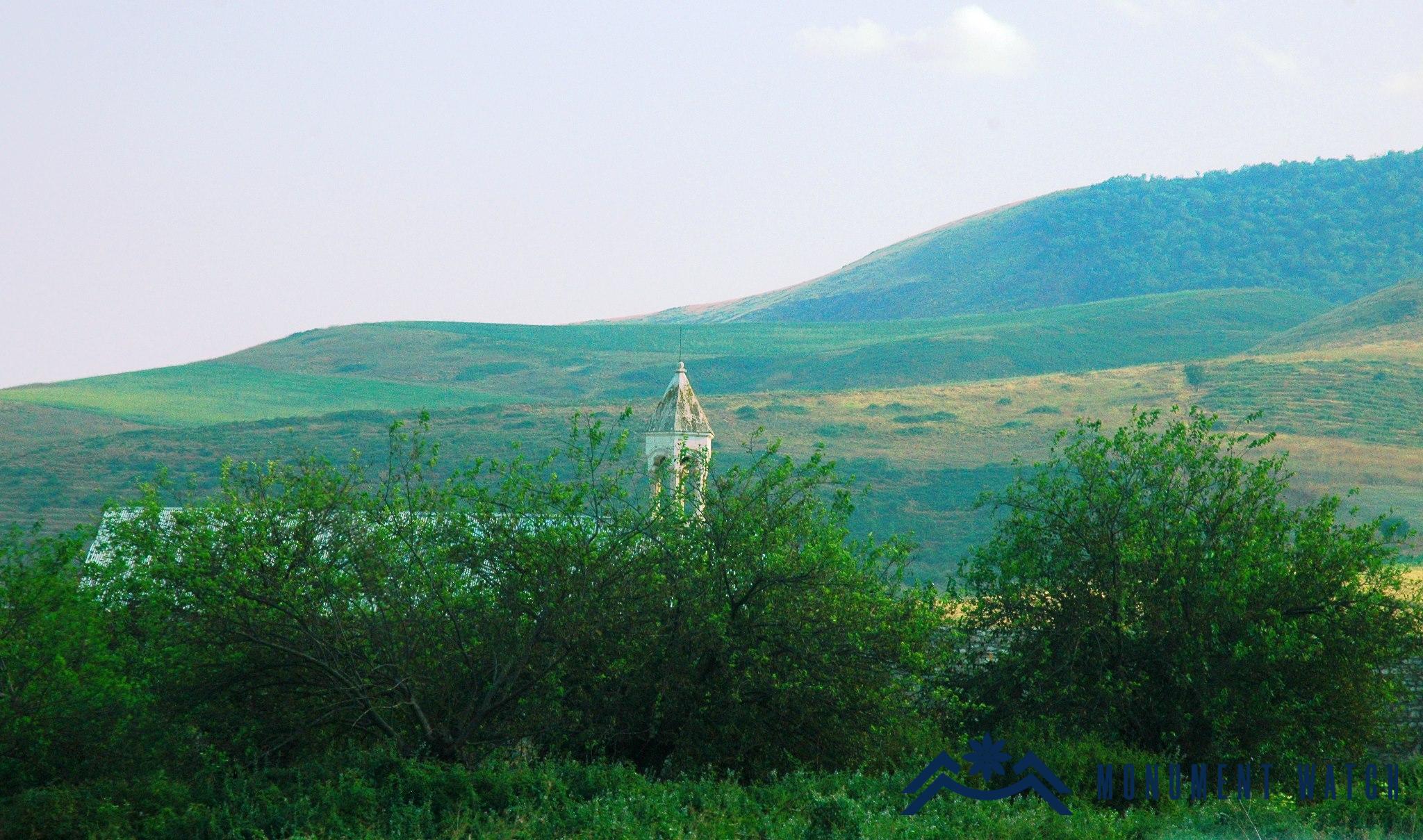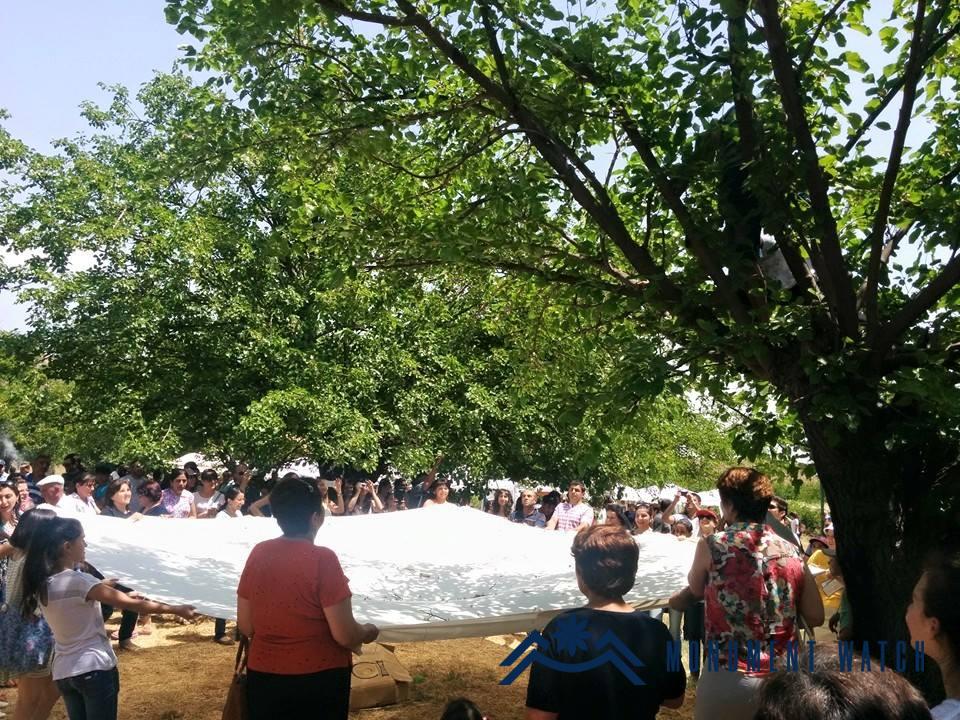The Amaras Monastery: General information
The Amaras Monastery stands as one of the oldest and most revered Christian sanctuaries in Artsakh. Much like Dadivank and Gandzasar, it played a pivotal role in nurturing the spiritual life of the region's Armenians for centuries, educating numerous generations. Folk legend associates the establishment of the first Armenian school by Mesrop Mashtots with Amaras.
The monastery was occupied by the Azerbaijani military on September 19-20, 2023.
Location
The Amaras Monastery is situated near the village of Machkalashen in the Martuni region of the Republic of Artsakh. It is nestled in the valley between the Khazaz and Lusavorich mountains. During the early Middle Ages, it was part of the Myus Haband province in Greater Armenia, and later, it became associated with Kochiz-Varanda in the late Middle Ages. The architectural complex of the Amaras Monastery is constructed on a perfectly level terrain, encompassing an area of approximately half a hectare (Fig. 1).
Historical overview
According to Armenian historians, the Amaras church was established by Gregory the Illuminator in the early 4th century (Buzand 1968, 75). However, it is noted that, because of raids by bandits and the substantial size of the church, no one was able to reconstruct the church originally founded by Gregory the Great (Kaghankatvatsi 1969, 48). Amaras gained particular renown in the mid-4th century when the grandson of Gregory the Illuminator, Grigoris, who was martyred while preaching Christianity in Caucasian Albania, was interred there (Khorenatsi 1940, 175). He was laid to rest beside the church established by the Illuminator, on its northeastern side (Kaghankatvatsi 1969, 28, 52). Towards the conclusion of the 5th century, Vachagan III the Pious rediscovered the long-forgotten site of the tomb of Grigoris, gathered his remains, and "commissioned the immediate construction of a chapel over the grave, naming it the Chapel of Surb Grigoris" (Kakhankatvatsi 1969, 60). It is plausible that by that time, the Amaras church had already fallen into disrepair or was in ruins, as it is stated that the construction of the holy church was undertaken with haste and fearlessness (Kaghankatvatsi 1969, 59). Vachagan, after discovering the relics of Grigoris, proceeded to construct the chapel and the church in 489 (Ormanyan 1959, 516). It is worth noting that this chapel has been remarkably preserved, remaining nearly identical to this day, nestled beneath the structure of the subsequently built Amaras Monastery church.
From the 5th century onward, Amaras held a prominent position as a religious hub in the region, serving as an episcopal seat. However, in the early 9th century, the monastery and the entire province fell victim to Arab incursions (Kaghankatvatsi 1969, 255). In the 13th century, it suffered pillaging at the hands of the Mongol Tatars (Orbelian 1910, 470). Furthermore, in 1387, during the raids led by Tamerlane, the Amaras monastery was once again destroyed (Barkhudaryants 1901, 170-174). Despite the challenging circumstances, the school within the monastery remained operational, and the complex retained its status as a religious and cultural center. During the 15th-16th centuries, numerous manuscripts were composed and transcribed at Amaras. In the third quarter of the 17th century, Catholicos Petros undertook renovations at Amaras and constructed a new church dedicated to Grigoris in the village of Herher. This new church served as a summer residence for the clergy of Amaras (Barkhutareants 1895, 104). The inscription on the facade of the southern door records that “I, Bishop Barsegh, a disciple of Catholicos Petros, restored and adorned the Holy See of Amaras. We fortified it with walls, including numerous rooms, and enhanced the splendor of the church. Additionally, we commissioned the construction of the church of Surb Grigoris as a summer retreat for the Holy See of Amaras and transferred some of his relics here, interring them in the ground. This endeavor was initiated in the summer of 1667 and completed in the summer of 1676" (CAE 5, 164). Thus, the inscription not only provides information about the construction of the Surb Grigoris Church in Herher but also details the extensive work carried out at Amaras as mentioned in the inscription ("...restored and adorned the Holy See of Amaras. We fortified it with walls, including numerous rooms, and enhanced the splendor of the church.") It's important to note that there is some ambiguity regarding the specific structure referred to as the "church of Amaras" in this context. It's unclear whether this term pertains to the renovation and embellishment of the existing chapel shrine of Grigoris or if it refers to the construction of an entirely new church that may not be documented in other historical sources.
During the second quarter of the 19th century, following the incorporation of Eastern Armenia into the Russian Empire, the Amaras monastery complex, equipped with a robust defensive system constructed in the 17th century, was repurposed as a cross-border fortress. From 1832 to 1847, it played a pivotal role as a customs house along the Russian-Persian border (Eprikyan 1903-1905, 136). The decline of the monastery commenced during this period. An eyewitness, Sargis Jalalyants, poignantly recorded: "The initial sight that greeted me was the Amaras monastery building. Within its premises, the royal customs house had been established, attended by a priest who also performed his duties at the tomb of Surb Grigoris. Currently, the customs house, too, has been abandoned, while the Amaras monastery continues to lie in ruins"(Jalaleants 1858, 336). The church suffered the most damage, whereas the walls and the secular building sustained less damage. The deteriorated church was reconstructed in 1858 with the assistance of Armenians from Shushi (according to Eprikyan 1903-1905, 136). In 1898, the architect Mikael Ter-Israilyants created a new tombstone for Grigoris (Lalayan 1897, 38).
In 1848, the monastery came under the jurisdiction of Baghdasar, the Metropolitan Bishop of Gandzasar. Towards the close of the 19th century, the monastery possessed various properties, including arable lands, a garden, and a mill.
Following the Artsakh Liberation War, Amaras experienced a revival and restoration, transforming into a focal point for pilgrimages and Artsakh festivals (Fig. 2, 3).
Bibliography
- Barkhudaryants 1901 - Makar bishop Barkhudaryants, History of Aghvank (Caucasian Albania), volume A, Tbilisi.
- Barkhutareants 1895 - Makar Bishop Barkhutareants, Artsakh, "Aror", Baku.
- Buzand 1968 - Pavstos Buzand, History of Armenia, Yerevan.
- CAE 5 - Corpus of Armenian Lithography, Issue 5, Artsakh, compiled by S. Barkhudaryan, Yerevan, 1982.
- Eprikyan 1903-1905 - Eprikyan S., Illustrated Domestic Dictionary, volume 1, Venice.
- Lalayan 1897 - Lalayan E., Varanda, Ethnographic Journal, No. 2, Tbilisi.
- Kaghankatvatsi 1969 - Movses Kaghankatvatsi, History of the Caucasian Albania, "Hayastan" publishing house, Yerevan.
- Jalalyants 1858 - Jalalyants S․, Journey to Greater Armenia, part B, Tiflis.
- Orbelian 1910 - Stepanos Orbelian, History of the Province of Syunik, Tiflis.
- Ormanyan 1959 - Archbishop Malachia Ormanyan, Azgapatum, Volume A, Beirut.
The Amaras Monastery: General information
Artsakh



